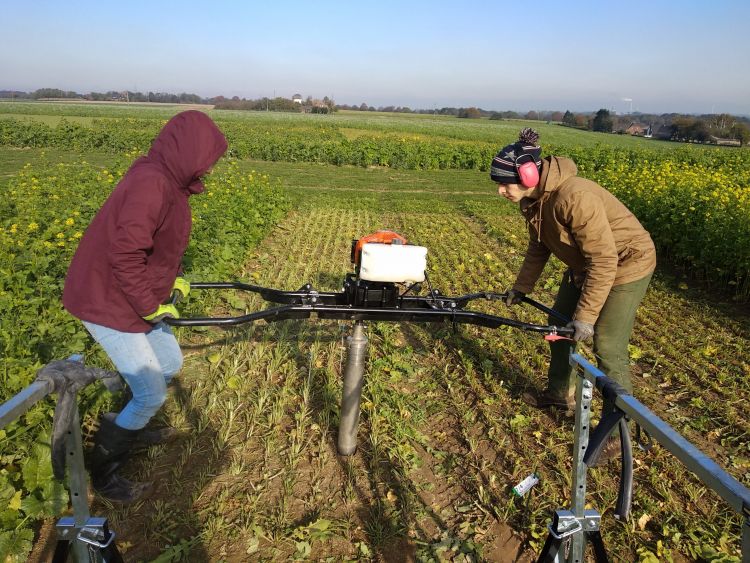SHAPE Field Laboratory – Integrated Measurement and Monitoring System
Work Package III

The EU directive will require periodic monitoring of the soil health of all relevant soils in the EU (see above), as well as the implementation and evaluation of improvement measures. This requires the comprehensive measurement of so-called “soil descriptors.” These are biological, chemical, and physical soil parameters that are related to soil health. Regardless of future regulations and documentation obligations, farmers themselves have now developed a strong interest in the various parameters of soil health and the active improvement of soil life and soil structure.
Various groups, not only from the organic farming community, are now becoming pioneers in alternative soil care and fertilization measures. This includes reducing soil compaction by heavy machinery and increasing water permeability to support groundwater recharge, which is becoming increasingly urgent in view of structural droughts. In addition to the growing awareness of our responsibility to preserve our habitats and biodiversity, there are also tangible monetary and time-related aspects that favour this development. For example, the price of nitrogen fertilizers has risen by 70% since 2020 due to the ongoing global crises, and other costs are also continuing to rise. Against this backdrop, it is becoming increasingly interesting for farmers to take a closer look at their own crop management and the topic of soil. Nutrient and water storage capacity can be actively influenced through targeted measures, and even when using conventional artificial fertilizers, significant savings can be achieved with precision farming methods. However, the basic prerequisite for this is detailed knowledge of the current soil condition on one’s own land.
This is where SHAPE comes in, developing innovative, user-centered measurement and analysis systems that provide users with all the data relevant to making decisions about the necessary measures in a timely and understandable manner, without requiring in-depth specialist knowledge and detours via laboratories. A novel approach is monitoring with a focus on soil health, in which specific, relevant parameters from soil biology (3.1), soil chemistry (3.2, 3.3), and soil physics (3.4, 3.5) are considered together. For this purpose, novel sensors are being developed (WP 3.1 to 3.5), combined with existing sensors that are yet to be miniaturized for measuring, for example, pH, electrical conductivity, temperature, CO2 at the soil surface, phosphorus, and potassium, and integrated into a measurement and analysis system – the SHAPE field laboratory for “near real-time” soil health measurements.
The prototype products developed in this way can be used individually or in groups in self-sufficient subsystems (mobile and stationary). To ensure this, distributed databases are being developed in the individual work packages, which store data offline and then synchronize it online. This not only ensures the interoperability of all system components but also enables the individual systems to be offered as standalone products or services, allowing them to be deployed and marketed independently of the overall system. In this WP, the hardware and software structure for integrating the measurement and analysis systems (3.1 to 3.5) into the monitoring system is being developed, and a design concept for the mobile field laboratory is being established. The monitoring system will be integrated into the soil management system in WP5.